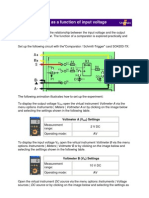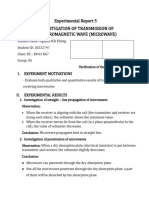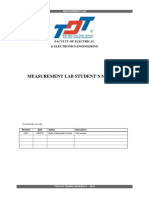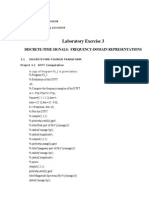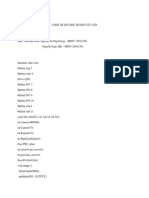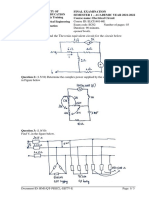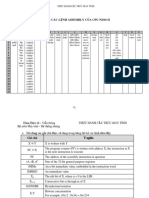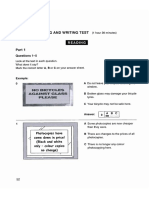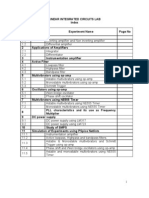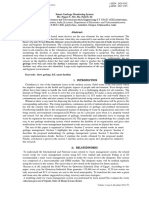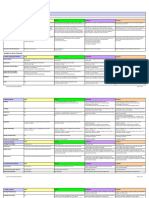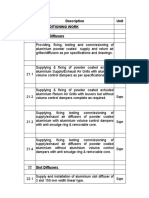Comparator
This experiment shows the relationship between the input and output voltages of a comparator. The operation of a comparator is demonstrated practically and confirmed experimentally.
Circuit
Procedure
List of connections 1. Connect an Experimenter to the UniTr@in-I Interface and insert the experiment card SO4203-7X comparator. Connect experiment field I of the experiment card with the UniTr@in-I interface as shown
From To
Name: cia, Date: 05.04.2011
Page 1 of 5
�in the diagram and the list of connections:
Interface S Interface GND Interface S Interface GND Interface A+ Interface ATerminal X5 Terminal X11
Terminal X1 Terminal X8 Interface B+ Interface BTerminal X7 Terminal X10 Terminal X6 Terminal X12 Terminal X13
Terminal X3
Settings
DC source Power ON
2. Open the following virtual instruments from the Instruments menu: - DC source - Voltmeter A - Voltmeter B and set them as shown in the table. Turn potentiometer P1 all the way to the right.
Digital Voltmeter A Range 2V VA DC and AV Digital Voltmeter B Range 10V VE DC and AV
Name: cia, Date: 05.04.2011
Page 2 of 5
�3. Increase the output voltage on the DC source until the red LED goes off and the green one comes on. Decrease the input voltage just until the red LED comes on. Result 1 4. Measure the input voltage with Voltmeter B and enter the result in the corresponding field. _______V Input voltage.
5. Interpret result 1. Which reference voltage must be present at the non-inverting input? If necessary, measure the signal (Terminal X5). Which component determines the value of this voltage? Disconnect 6. Connect up the selected virtual instruments. Modify the circuit as specified on the right.
From Terminal X5 To Terminal X6
Terminal X11 Terminal X12
Settings
Power ON,
Name: cia, Date: 05.04.2011
Page 3 of 5
�7. Open the following virtual instruments from the Instruments menu: - Function generator - Oscilloscope and set them as shown in the table.
Function generator
Amplitude 100% at 1:1 Frequency 100 Hz Triangular waveform
Oscilloscope 5V / Div Channel A Coupling DC VA Oscilloscope 5V / div. Channel B Coupling DC VE Oscilloscope X/T mode Time base 2ms / div and trigger Trigger B
8. Change the reference voltage with P1 and observe the oscilloscope display. Using P1, set the reference voltage so that the switching threshold of the comparator is roughly +5V. 9. Using the oscilloscope, measure the input voltage V and output voltage V , and transfer the oscillogram to the E A adjacent field. Also, enter the oscilloscope settings in the corresponding fields. : ___ : ___ : ___
Name: cia, Date: 05.04.2011
Page 4 of 5
�Ve : ___Vpp fe : ___Hz Va : ___Vpp
Coupling:
____
10. Evaluation: Interpret the results and describe the operation of a comparator.
Name: cia, Date: 05.04.2011
Page 5 of 5
